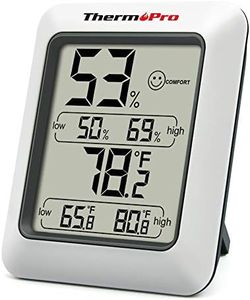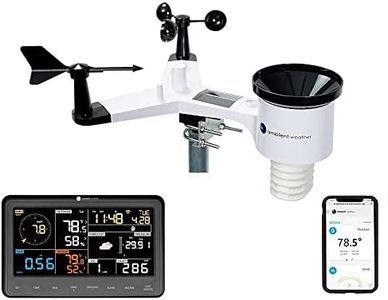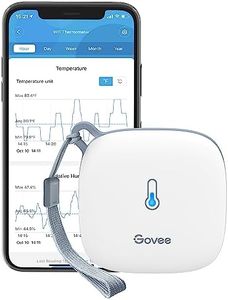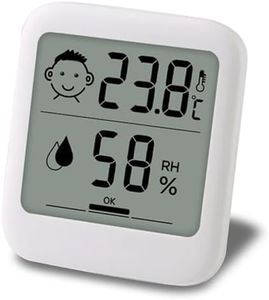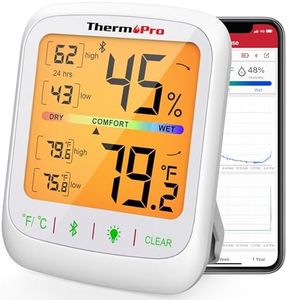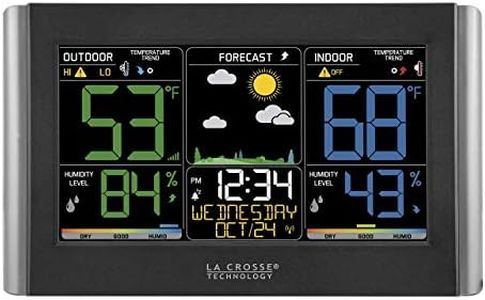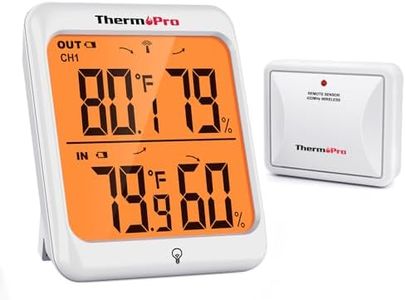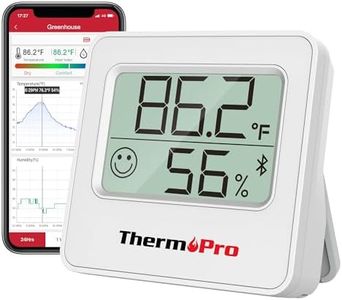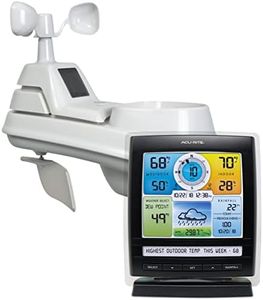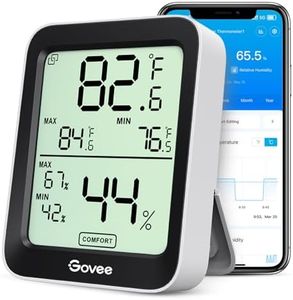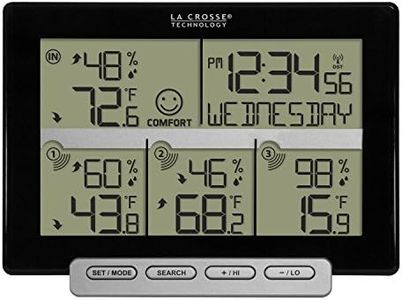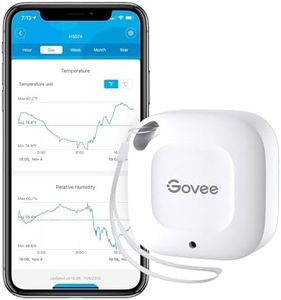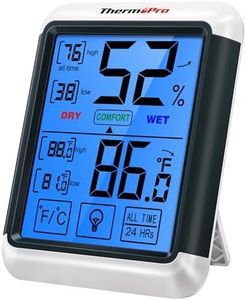We Use CookiesWe use cookies to enhance the security, performance,
functionality and for analytical and promotional activities. By continuing to browse this site you
are agreeing to our privacy policy
10 Best Humidity Meter
From leading brands and best sellers available on the web.Buying Guide for the Best Humidity Meter
Buying a humidity meter, also known as a hygrometer, is a practical decision for keeping track of air moisture—something important both for comfort and for protecting objects sensitive to humidity, like musical instruments, wood, or certain foods. Whether you need one for your home, office, greenhouse, or for a collection, understanding the main features helps you choose a device that fits your environment and needs. It’s all about picking a meter that provides reliable, easy-to-read information and is suitable for the space you want to monitor.AccuracyAccuracy refers to how closely the humidity readings on your meter reflect the true humidity in the air. This is crucial because an inaccurate reading can lead you to make wrong decisions, like overheating or excessively humidifying a room. Humidity meters usually display their accuracy as a percentage, such as ±2% or ±5%. Lower numbers mean greater accuracy. If you need precise control, such as for sensitive collections or greenhouses, look for devices with high accuracy (less than ±3%). For general home use, a slightly less accurate model (up to ±5%) will still give you a good sense of the environment.
Measurement RangeMeasurement range tells you the lowest and highest humidity levels the meter can read, often shown as a percentage (like 10%-90% RH). This is important because you want a meter that can measure both very dry and very humid conditions if you expect such variations. Choose a meter with a range that covers or exceeds the humidity extremes in your environment. For most home and office needs, a standard range is sufficient, but if you live in a place with unusual humidity or use the meter in specialized spaces, look for a wider range.
Response TimeResponse time is how quickly the meter updates its humidity reading after there’s been a change in the environment. Quick response is useful if you need to monitor sudden changes, such as for experiments or weather-sensitive storage. Most users are fine with slower response times, as room conditions shift gradually, but if real-time tracking is important for you, look for meters that mention fast or immediate response.
Display TypeDisplay type refers to how the humidity readings are shown—you might see analog dials or digital screens. Digital displays are often easier to read, especially from a distance or in low light, and may offer extra information like temperature. Analog displays don’t need batteries and can be more traditional looking but may be harder to interpret at a glance. If you want something simple and clear, a digital display is usually the way to go; if you prefer a classic look, analog could be appealing.
Calibration CapabilityCalibration means adjusting the meter so it gives the most accurate reading. Over time, humidity meters can drift and provide less accurate data. Some meters let you recalibrate them, often by following a simple procedure. This feature is important if you need long-term accuracy, especially in sensitive situations. If ultimate precision matters for you, check for recalibration options; for general household monitoring, it’s less critical.
Temperature MeasurementMany humidity meters also measure temperature because humidity is closely related to how warm or cool the air is. This all-in-one feature is helpful, letting you keep an eye on both key aspects of your environment. If controlling comfort or protecting items from combined effects of heat and moisture is important, make sure your meter measures both. For those who already have a thermometer or don’t care about temperature, this may not be necessary.
Mounting Options and PortabilityThis detail describes how and where you can place the meter—it could be wall-mounted, stand on a tabletop, or portable to move around. Mounting is important for permanent monitoring (like in a nursery or humidor), while portability suits those who want to check different locations. Consider where you plan to use the meter most and select accordingly; if you’re unsure, a portable option offers the most flexibility.

